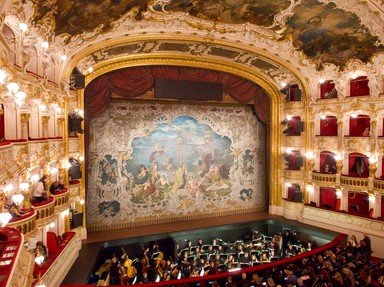Quiz Answer Key and Fun Facts
1. In England, William Charles Macready (1793-1873) influenced both acting styles and directing methods. In acting, he combined the dignified restraint of John Kemble with the unpredictable passion of Edmund Kean to arrive at a quieter, more natural reading of texts that included famously long pauses for reflection. Which of the following directing techniques did he use?
2. William Charles Macready and Edwin Forrest (1806-1872) were premiere talents in their respective countries. Macready epitomized the restraint and poise of British acting. Forrest embodied the physical heroism of American acting. In 1849, the two actors were playing the same role in separate productions in New York City. Forrest's fans tried to disrupt Macready's performance, and a riot broke out. What character were these actors playing?
3. Which of the following innovations in theatre design can be attributed to Mme. Vestris (1797-1856)?
4. Charles Kean (1811-1868) was an enthusiast for pictorial realism and period costumes. In productions of Shakespeare's plays, he often cut the text in order to allow for more extravagantly visual scenic designs.
5. Marie Wilton (1839-1921) managed the Prince of Wales and Haymarket theatres and married Squire Bancroft (1841-1926), an actor in her company. Together, they changed what aspect of going to the theatre?
6. What Frenchman originated a system of training for actors based on the theory that specific body motions, postures and gestures convey specific emotions, and that those elements can be scientifically applied to performance?
7. Sarah Bernhardt (1844-1923) achieved huge fame despite a shrill, raspy voice.
8. Eleanora Duse (1859-1924), an Italian actress in competition with Sarah Bernhardt, performed with a presentational acting style.
9. The African Company (1821-1823) was a company of African-American actors. The company often performed in native dialect and speech rhythm, even when doing Shakespeare. The company disappeared after 1823 because it was so often harassed by white rowdies and was unable to successfully perform for the real audiences. One actor emerged from the company to become a star in Europe. What was his name?
10. Edwin Booth (1833-1893) was one of the finest American actors of his time. In 1863, he set a record 100 performances of "Hamlet" at New York City's Winter Garden Theatre. Was this famous Booth related to that other Booth who assassinated President Lincoln?
Source: Author
rj211
This quiz was reviewed by FunTrivia editor
agony before going online.
Any errors found in FunTrivia content are routinely corrected through our feedback system.


